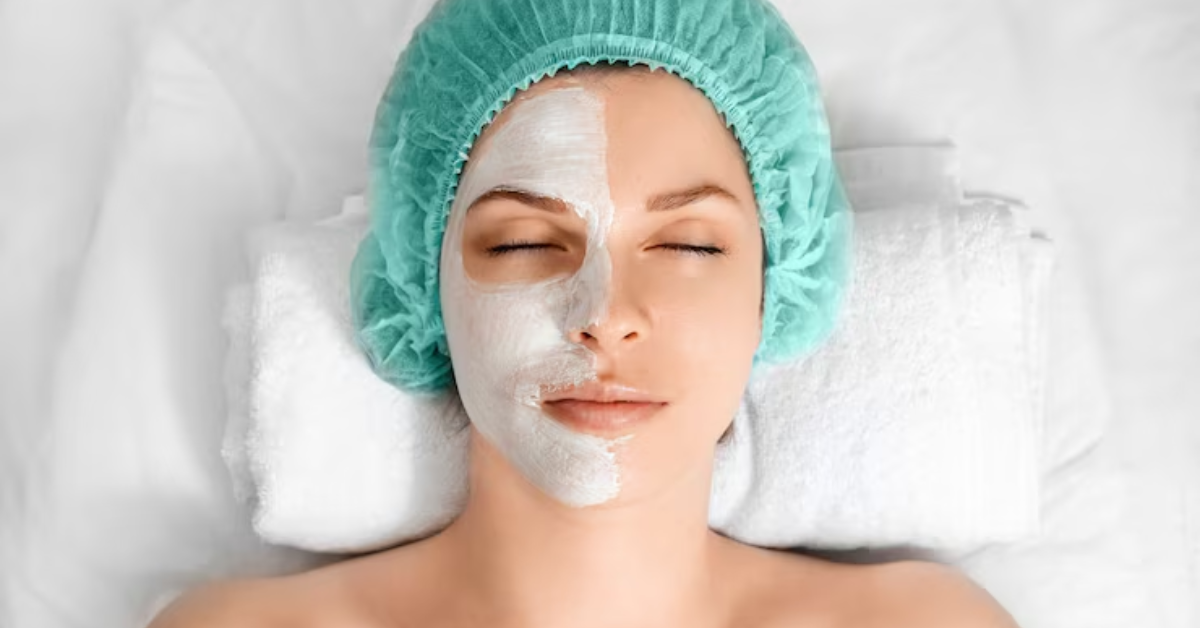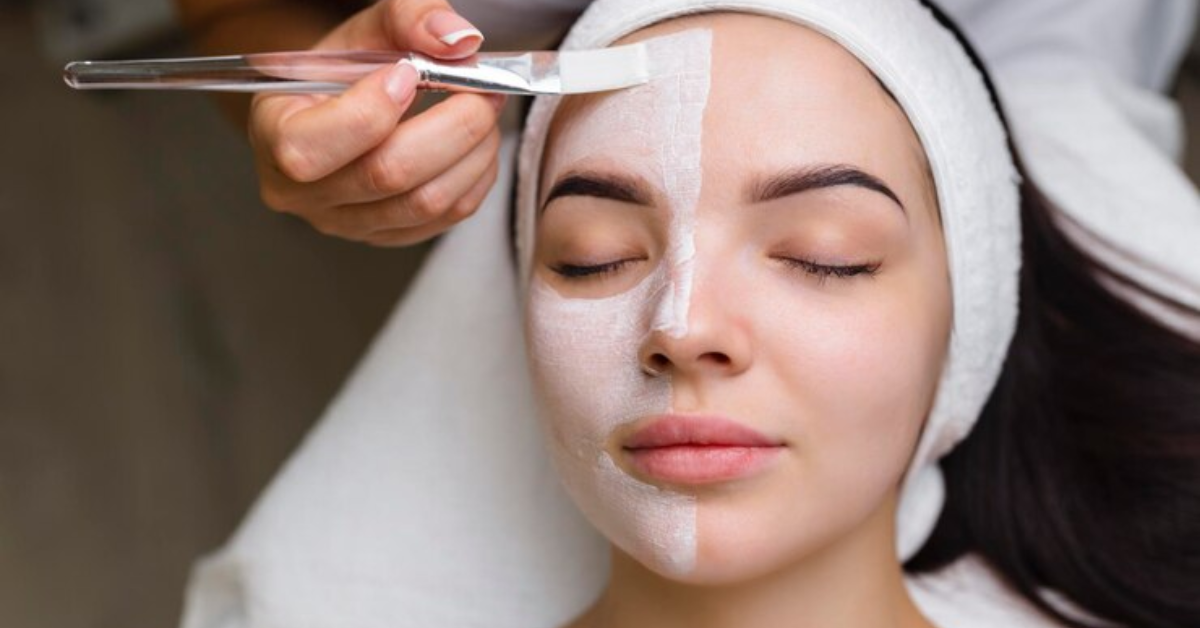Debunking Common Myths About Laser Hair Removal
Laser hair removal has rapidly gained popularity as a modern and effective method for achieving smooth, hair-free skin. However, with its increasing prominence, several myths and misconceptions have also emerged, causing confusion and hesitancy among potential candidates. Here, we aim to dispel these common myths surrounding laser hair removal, empowering you with accurate information and insights.
Before diving into the myths, let's establish a strong foundation by understanding the fundamental principles behind laser hair removal. We'll explore how this innovative technique targets hair follicles to provide long-lasting results and the factors that influence its efficacy.
The Growing Popularity of Laser Hair Removal
In recent years, laser hair removal has witnessed a significant surge in demand, becoming a favored choice for individuals seeking a convenient and efficient way to manage unwanted hair. We will investigate its widespread acceptance and the advantages it has over time-honored techniques for removing unwanted hair.
Drawing a clear comparison, we'll highlight the advantages of opting for laser hair removal over conventional approaches like waxing, shaving, and depilatory creams. From reduced hair regrowth to potential time and cost savings, we'll explore why laser hair removal has become a game-changer in the world of hair removal solutions.
How Does Laser Hair Removal Work?
To effectively dispel myths surrounding laser hair removal, it's essential to learn the mechanics of how this advanced technology actually works. At the heart of it all lies the understanding of melanin, the pigment that determines our hair and skin color. This knowledge serves as a crucial foundation for comprehending the principles behind laser hair removal.
So, how do laser beams interact with melanin to achieve the desired outcome? The laser emits a highly concentrated beam of light, and when it comes into contact with the targeted area, the melanin in the hair follicles absorbs the energy from the laser. This intense absorption of energy transforms into heat, effectively heating up and damaging the hair follicles. The process is carefully designed to be selective, targeting only the melanin-rich hair follicles while minimizing damage to the surrounding skin.
Myth 1: Laser Hair Removal is Painful
Laser hair removal has long been associated with pain and discomfort, deterring many individuals from considering it as a viable option for hair removal. However, it is essential to address these misconceptions and provide a more accurate understanding of the procedure's pain level. While it is true that some individuals may experience mild discomfort during the process, advancements in technology have significantly reduced the pain associated with laser hair removal.
Modern laser hair removal machines are designed with cooling mechanisms that help to minimize discomfort. The laser targets the hair follicles, and the cooling feature soothes the surrounding skin, preventing excessive heat and reducing the sensation of pain. Also, experienced professionals can adjust the laser's intensity based on a person's skin type and hair color, further enhancing the comfort of the procedure.
Laser vs. Traditional Hair Removal Techniques
To dispel the notion of laser hair removal being excessively painful, it is helpful to compare the sensation to traditional hair removal techniques such as waxing or epilating. Waxing involves pulling hair out from the roots, which can cause significant discomfort and pain, especially in sensitive areas. Similarly, epilators mechanically pull hair, leading to a similar level of discomfort.
In contrast, laser hair removal offers a relatively less painful experience. It is generally more bearable than the severe pain associated with conventional methods, which has been described as a tingling or mild snapping feeling by some patients. Moreover, laser treatments are quicker than waxing, reducing the duration of potential discomfort.
Numbing Creams and Other Techniques to Minimize Discomfort
For individuals concerned about pain during laser hair removal, several techniques can be employed to minimize discomfort. One popular option is using numbing creams or gels before the procedure. These topical anesthetics are applied to the treatment area, dulling the nerve endings and reducing the perception of pain.
Moreover, scheduling the laser hair removal session during a specific phase of the menstrual cycle can also help reduce sensitivity, especially for those with lower pain thresholds. Communicating openly with the technician about pain tolerance can also lead to adjustments in the laser's intensity, ensuring a more comfortable experience.
Myth 2: Laser Hair Removal is Not Safe for All Skin Types
One prevalent myth surrounding laser hair removal is that it is not safe for all skin types. Though, the compatibility between a person's skin and hair type has a significant impact on the safety and effectiveness of laser treatments. Laser technology has evolved significantly, and many devices can now be used on a wide range of skin tones and hair colors.
The primary principle behind laser hair removal is that the laser targets the pigment, or melanin, present in the hair follicles. Darker hair contains more melanin, making it more receptive to laser treatment. Therefore, people with darker hair tend to respond better to laser hair removal. Individuals with lighter hair, such as blonde, red, or gray, have less melanin in their hair follicles. In the past, this made laser hair removal less effective for them. Nevertheless, advancements in technology and the introduction of specialized lasers, such as Nd:YAG lasers, now allow individuals with lighter hair to undergo the procedure with better results.
Advancements in Laser Technology for Diverse Skin Tones
With technological advancements, the laser hair removal industry has made significant strides in catering to diverse skin tones. Traditional lasers used to have a higher risk of causing adverse effects on darker skin types, such as burns or hyperpigmentation. However, newer technologies have emerged to address these concerns.
Nd:YAG lasers and diode lasers are two examples of technologies that are safer for darker skin tones. These lasers have longer wavelengths, which allows them to bypass the skin's melanin and focus primarily on the hair follicles. As a result, they reduce the risk of damage to the surrounding skin. Newer laser devices often come with adjustable settings, enabling practitioners to customize the treatment according to the specific needs of each individual's skin and hair type. This level of customization enhances safety and effectiveness, making laser hair removal a viable option for a broader range of people.
Myth 3: Laser Hair Removal is Not Suitable for Facial Hair
One prevalent misconception surrounding laser hair removal is that it is not suitable for facial hair. Laser hair removal can be a highly effective and safe method for reducing and eliminating unwanted facial hair. Many individuals, both men and women, have successfully undergone laser treatments to address facial hair concerns.
Facial areas that can be treated with laser hair removal include the upper lip, chin, cheeks, sideburns, and jawline. However, the treatment's success may vary depending on individual factors, such as hair color, skin tone, and hormonal influences. It is essential to consult with a trained professional to determine the best approach for each unique case.
Addressing Specific Concerns for Sensitive Facial Skin
Sensitive facial skin is a common concern for those considering laser hair removal. Some worry that the procedure may cause irritation, redness, or other adverse effects. While the skin on the face is more delicate than on other body areas, laser hair removal can still be safe and well-tolerated with proper precautions.
Experienced practitioners will consider a person's skin type and any existing skin conditions during the initial consultation. They may adjust the laser's settings to ensure the procedure is both effective and gentle on the skin. The use of cooling mechanisms and post-treatment care can help soothe and protect the treated area. For individuals with very sensitive skin or specific skin conditions, the practitioner may recommend test patches to assess the skin's response to laser treatment before proceeding with a full session. This cautious approach allows for personalized adjustments to minimize any potential discomfort or side effects.
Myth 4: Laser Hair Removal is a One-Time Fix
One common misconception surrounding laser hair removal is that it provides a one-time fix for permanent hair removal. In reality, achieving the desired results typically requires multiple treatment sessions. While laser hair removal offers long-term hair reduction, it is essential to set realistic expectations and understand the process involved.
Hair growth follows a cyclical pattern, meaning not all hairs are actively growing simultaneously. Laser hair removal targets actively growing hairs, and dormant hairs may not be affected during a single session. Therefore, multiple sessions are necessary to target hairs in different growth stages and maximize the effectiveness of the treatment.
The number of sessions required varies from person to person and depends on factors such as hair density, hair color, skin type, and the specific treatment area. Most individuals will need between 6 to 8 sessions spaced several weeks apart to achieve the best results.
Factors Affecting the Number of Sessions Needed
Several factors influence the number of laser hair removal sessions required for optimal results. Hair color and thickness play a significant role, with darker, coarser hairs typically responding better to treatment than lighter or finer hairs. Individuals with lighter hair may require additional sessions due to the reduced melanin present in the hair follicles.
Skin type is also a crucial consideration. Those with lighter skin and darker hair tend to have the best results since the laser can more effectively target the hair without excessive absorption by the skin. People with darker skin tones may need additional sessions and require the use of specific lasers, such as Nd:YAG lasers, to minimize the risk of skin damage.
Hormonal factors can also impact hair growth. Hormonal imbalances, pregnancy, or medical conditions like PCOS may influence the hair's growth patterns, necessitating more sessions to address new hair growth that may occur over time.
Understanding Maintenance Treatments for Long-Term Results
While laser hair removal can significantly reduce hair growth, it is essential to recognize that it is not entirely permanent for everyone. Over time, some fine hairs may regrow or new hair follicles may become active due to hormonal changes or other factors.
To maintain the results achieved through laser hair removal, maintenance treatments may be necessary. These sessions are typically scheduled at longer intervals compared to the initial treatment plan. Maintenance treatments help to target any new hair growth and ensure that the desired smoothness and hair reduction are maintained over the long term.
Adhering to the recommended maintenance schedule and following the practitioner's aftercare instructions will contribute to the success and longevity of the laser hair removal results.
Myth 5: Laser Hair Removal is Expensive
One prevailing myth surrounding laser hair removal is that it is prohibitively expensive compared to traditional hair removal methods. While the upfront cost of laser treatments may seem higher than alternatives like waxing, shaving, or threading, it is essential to consider the long-term benefits and cost-effectiveness of laser hair removal.
Traditional methods, such as waxing or threading, require frequent visits to salons or spas, and the costs can quickly add up over time. These methods provide temporary results, necessitating continuous upkeep and spending. In contrast, laser hair removal offers long-lasting hair reduction, reducing the need for frequent treatments and associated expenses.
Financing and Payment Options for Affordability
To make laser hair removal more affordable and accessible, many clinics and medical spas offer various financing and payment options. Some establishments may provide package deals that include multiple sessions at a discounted rate, making it more economical for clients. Some clinics also offer financing plans that allow individuals to spread out the cost of laser hair removal over several months, making it more manageable for their budget. Others may accept installment payments or provide loyalty programs for repeat clients to receive discounts on subsequent treatments.
Before choosing a laser hair removal provider, it is advisable to inquire about available financing and payment options. By exploring these possibilities, individuals can find a payment plan that suits their financial circumstances and makes laser hair removal a more feasible and affordable option.
Myth 6: Laser Hair Removal Causes Skin Damage
One prevalent myth surrounding laser hair removal is that it causes skin damage, leading to irritation, burns, or other adverse effects. While there is a potential risk of skin irritation or burns if the procedure is not conducted properly, the likelihood of such complications can be significantly reduced with appropriate precautions and qualified practitioners.
Modern laser hair removal technology is designed with built-in safety measures to protect the skin. Cooling mechanisms, such as a cooling gel or a chilled tip on the laser device, help to cool the skin during treatment, minimizing discomfort and reducing the risk of burns. Skilled practitioners will conduct a patch test on a small area of the skin before starting a full session to ensure the skin's reaction to the laser.
The Importance of Skilled Practitioners and Proper Settings
The key to a safe and effective laser hair removal experience lies in the expertise of the practitioners performing the procedure. Qualified professionals will consider a person's skin type, hair color, and any pre-existing skin conditions during the initial assessment. Based on this evaluation, they will choose the appropriate laser device and adjust its settings to suit the individual's needs.
Using the correct laser settings is important to ensure the laser targets the hair follicles without causing excessive damage to the surrounding skin. Experienced practitioners will employ their expertise to find the right balance between effectiveness and safety, minimizing the risk of skin damage.
Preparing the Skin for Laser Hair Removal to Minimize Risks
Proper preparation of the skin before laser hair removal can also help minimize potential risks. Patients should follow the guidelines provided by the practitioner, which may include avoiding sun exposure and tanning beds for a few weeks before the procedure. Excess sun exposure can increase skin sensitivity and the risk of adverse reactions to the laser.
Patients should also avoid using skincare products that can irritate the skin, such as retinoids or acids, in the treatment area leading up to the session. Keeping the skin well-hydrated and moisturized can also improve its resilience during and after laser hair removal.
Myth 7: Laser Hair Removal is Not Permanent
One common myth about laser hair removal is that it is not permanent, and that the hair will regrow after treatment. While it is true that laser hair removal offers long-lasting results, it is essential to clarify the term "permanent" and understand how the procedure works.
Laser hair removal targets and damages the hair follicles to reduce hair growth significantly. Many individuals experience a notable reduction in hair growth after completing their recommended sessions. However, some fine or dormant hairs may still remain, leading to the misconception that the treatment is not permanent.
The Difference Between Permanent Reduction and Total Elimination
It is essential to differentiate between "permanent reduction" and "total elimination" when discussing the effectiveness of laser hair removal. Permanent reduction means a significant reduction in hair growth that can last for months or even years. While most people experience substantial hair reduction, complete elimination of all hair follicles in the treated area is not always possible.
Total hair elimination is technically challenging since hair growth can be influenced by various factors, including hormones and genetic predisposition. The goal of laser hair removal is to achieve a significant and long-lasting reduction in hair growth, rather than the complete eradication of all hair.
While laser hair removal cannot guarantee permanent total elimination, it offers a highly effective and enduring solution for hair reduction, making it a preferable option for many individuals seeking long-term hair removal results.
Myth 8: Laser Hair Removal is Only for Women
Laser hair removal is not limited to women, and there has been a notable increase in the number of men choosing this method of hair removal in recent years. Traditionally, hair removal was often associated with women, but societal attitudes have evolved, and men are now more open to grooming practices, including laser hair removal, to achieve a well-groomed and clean appearance.
Men are increasingly recognizing the benefits of laser hair removal, such as longer-lasting results compared to traditional methods like shaving or waxing. Laser hair removal is well-suited for men with excessive body hair or those seeking smoother skin, making it a popular choice for various individuals.
Conclusion
Laser hair removal is a highly effective and popular method for achieving smooth, hair-free skin. Dispelling common myths surrounding the procedure, we provide accurate information and insights to help individuals make well-informed decisions. Advancements in technology have made laser hair removal suitable for diverse skin tones and hair colors, with men also increasingly opting for this convenient and efficient solution. Understanding its principles, the importance of skilled practitioners, and realistic expectations ensures a safe and satisfying experience. As cultural attitudes evolve, laser hair removal becomes widely accepted as an inclusive and effective hair removal solution for all.
BOOK YOUR FREE SESSION
We will get back to you as soon as possible
Please try again later
-
Locations
- Laser hair removal fort lauderdale
- Laser hair removal Hollywood
- Laser hair removal Pompano Beach
- Laser hair removal Pembroke Pines
- Laser hair removal Dania
- Laser hair removal Coral Springs
- Laser hair removal Margate
- Laser hair removal Coconut Creek
- Laser hair removal Deerfield Beach
- Laser hair removal Hallandale
- Laser Hair Removal Cooper city
- Laser hair removal davie
© 2021 Huggie Beauty Developed by LocalOptimize.co - All Rights Reserved










